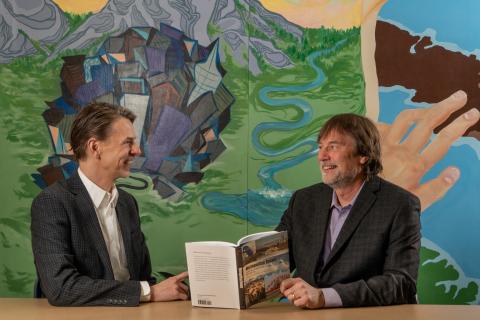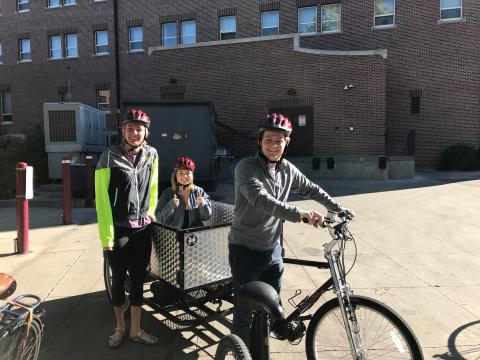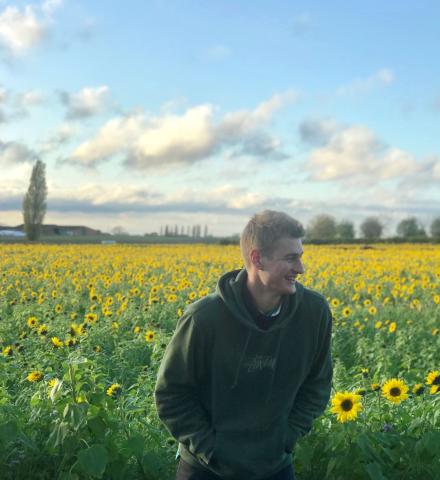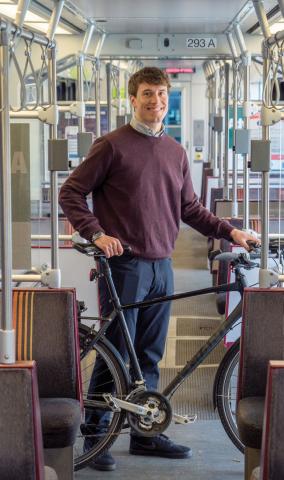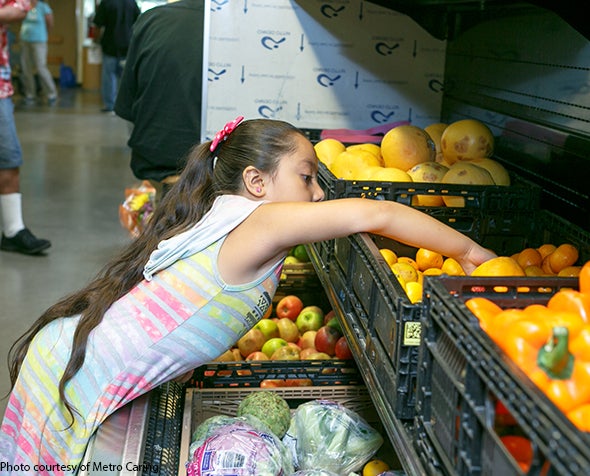DU Takes on Sustainable Mobility
DU faculty, staff and alumni are building a better world through more thoughtful transportation
When most people in the Denver metropolitan area head out to work, to the grocery store or to a concert, they get in their cars and drive alone to their destination. In fact, this transportation habit accounts for 70% of all trips — whether by bicycle, bus or otherwise — in the city.
That’s bad news for the planet. After all, transportation contributes significantly to climate change. In 2017, the Environmental Protection Agency found that transportation alone was responsible for nearly 30% of the country’s greenhouse gas emissions.
To address this issue, University of Denver faculty, staff, students and alumni are advancing sustainable transportation solutions. Just look at the campus shuttle, launched as a last-mile transit option for the DU community. The University’s latest shuttle provider racked up more than 1,300 rides by 408 users in its first month of operation. And that’s just the beginning of a host of initiatives, programs and research currently underway on campus.
DU faculty contribute to mobility research on campus and beyond
Andy Goetz
Andy Goetz, a geography professor in the College of Natural Sciences and Mathematics, has spent decades researching the congested intersection of human behavior, transportation and urban planning. He worries about the current state of mobility and transportation.
For one thing, the number of vehicle miles traveled is increasing after a decade of decreasing. And, as people are spending more time in their cars, they are taking sustainable forms of transit less frequently. At the same time, new transportation options — for example, driverless vehicles — present as many quandaries as they do solutions. All of this is juxtaposed against increasing emissions of problematic greenhouse gases.
It’s no wonder that Goetz remains fascinated by mobility and the many questions surrounding it. So far in his research career, he has explored the public-private partnerships that built Colorado’s transit system, the challenges facing transit-oriented development and the ins and outs of sustainable transportation throughout the Mountain West. Now, he has a new question in mind.
“To what extent does the experience of being on a university campus and being exposed to different forms of transportation affect [student] travel behavior, not only during the college years but also the years after they leave the university? Does it last, or does it fade away once they leave the university environment?”
Through surveys and interviews with current students and alumni, Goetz and his colleagues hope to discover new patterns in the way young people interact with transportation. “I have noticed on-campus changes in student travel behavior,” he says. “When I first started, many students simply drove everywhere. I’ve seen a lot more students using alternative transportation or walking or skateboarding or taking scooters. To me, it seems like students now are much more tuned in to alternative transportation.”
This project aligns with Goetz’s longstanding interest in improving sustainable transportation solutions and in moving people away from gas-fueled vehicles.
“Even though on a per-car basis emissions are lower, just the sheer volume of car use is resulting in an increased amount of emissions,” he explains. “That’s not a good trend … and we need to make changes to that to achieve goals.”
Melissa Akaka
How can DU become a campus with enough transportation options to make cars obsolete? It starts with the campus shuttle, introduced in 2018 to help folks get around in a more sustainable way. But to really accelerate shuttle use, more research is essential.
That’s where Melissa Akaka comes in. An associate professor in the Daniels College of Business, she co-directs DU’s Consumer Insights and Business Innovation Center (CiBiC), which engages students in real-world, data-driven market research. DU’s sustainability team came to CiBiC with a challenge: Put data to work to determine how the campus shuttle can best serve the DU community.
Although research is just getting started, Akaka expects the process will deliver meaningful results that will help the shuttle service thrive. “Often our assumptions drive decisions, but now if we can bring data to the table to suggest that actually our assumptions might be wrong, it can actually save us a lot of money and time,” she says. “The ultimate goal is to provide insights for the decision makers and help them make more informed and effective decisions.”
To do that, Akaka and a student team will conduct interviews with key stakeholders, such as staff members at the off-campus Administrative Office Building and international students, who often don’t have driver’s licenses, much less access to vehicles. Those interviews will be reviewed and coded for patterns that will inform a broader survey that can be administered to the larger campus community.
A few key questions are guiding their work: What routes would best serve the campus community? How useful is the on-demand shuttle service? Would the outside community use and benefit from the shuttle service? The team hopes to have some answers come summer.
Students tackle sustainable mobility from multiple angles
Brittney Woodrum
Kentucky may not be isn’t exactly known as a hub for bicyclists, but Korbel School of International Studies graduate student Brittney Woodrum says she has found a home in Lexington’s budding cycling community. It was there that she began volunteering at a bike mechanic shop, fixing up and selling donated bicycles and stoking a passion for sustainable transit.
In summer 2019, that passion sent Woodrum on a cycling trip across the Pacific Northwest with a team for a program called Bike and Build. Along their journey, they stopped at various Habitat for Humanity project sites to lend a helping hand.
Now, as the graduate student mobility lead in DU’s Center for Sustainability, she draws on her knowledge and drive to promote a culture of sustainable transportation and mobility on campus. In this role, Woodrum mentors undergraduate students and helps connect the center’s mobility team to projects on campus and off.
“One of the biggest impacts we make is in our mobility choices,” Woodrum says. “From personal finance to the entire planet’s economy to the environment, it really has a huge impact. Especially here in the U.S., where the car reigns supreme. I think people really need to take a step back and problem solve.”
Among her favorite projects is DU’s weekly “Mobility Munchies,” which rewards travelers who get to class or work in a sustainable way, whether that’s walking, carpooling, biking or riding the light rail. Folks can stop by the Anderson Academic Commons on Wednesday mornings to collect their munchies and build community around sustainable mobility. Next quarter, the initiative aims to set up shop on the campus shuttle and provide treats to riders.
True to her sustainability roots, Woodrum is especially excited about DU’s bike shop in the Nagel Hall basement. It may be one of the University’s overlooked gems for now, but she hopes to see it expand in the near future, in part through quarterly mechanic workshops that are already underway.
Nathan Sirett
As he was completing a required checklist before leaving DU to study abroad at Sweden’s Lund University, Nathan Sirett came across an unfamiliar idea: carbon offsets.
“When I saw that, I was kind of shocked because I had never heard of that before, even though I worked at the Center for Sustainability,” he recalls.
The week he returned from overseas, Sirett, who studies environmental sciences in the College of Natural Sciences and Mathematics, met with Chad King, DU’s director of sustainability, to learn more about offsets and the role they play. Today, he serves as the center’s undergraduate carbon offsets lead, making sure other students, especially those studying abroad, understand how carbon offsets can help DU progress toward carbon neutrality. (Study abroad flights account for 10% of DU’s carbon footprint, Sirett says.)
“An offset is a way we can counteract carbon dioxide emissions, and that can be from a car or plane flights. Most of the time that’s going to be through a donation to a project that is working to offset carbon emissions,” Sirett explains. DU offsets carbon through a partnership with the Southern Ute Indian Tribe Project from NativeEnergy, which captures methane gas and uses it before it can leak into the atmosphere.
Study abroad students aren’t the only ones urged to contribute to carbon offsets. Anyone who regularly drives to, say, mountain ski resorts might want to donate as well. A $10 donation, Sirett says, would cover the average person’s ski season travel.
Despite the fact that he’s graduating in just a few weeks, Sirett hopes to leave a sustainable legacy for future students through his work related to the new Denver Advantage buildings springing up on campus this year. He and King are pooling their energies to buy large-scale offsets to ensure the additions to campus remain carbon neutral. help the campus achieve carbon neutrality goals.
“The biggest thing has been seeing people hear about [offsets] for the first time and knowing more people are starting to learn about it,” he says. “It’s cool to have had a hand in that.”
Alumnus takes on Denver’s transportation future
Working as a senior city planner in Denver’s Department of Transportation and Infrastructure, Stephen Rijo tells his “Welcome to Colorado” story a lot.
“I grew up in New Jersey and took trains for granted,” he remembers. “I did my undergrad in Colorado Springs, and I just assumed I could take a train to Denver and Boulder.”
Rijo was so distressed by the state’s lackluster public transportation options that he decided to pursue his master’s in geography at DU’s College of Natural Sciences and Mathematics before going on to make transportation his career.
In his current role, Rijo has a hand in projects that make a difference today, as well as ones that look 20 years into the future. Take, for example, his recent work on corridor plans for busy Colfax Avenue. Rijo is focusing on efforts to improve mobility along the street through bus rapid transit, but he’s also working on far-reaching plans for the surrounding neighborhoods.
“The thought is, if we are making this massive investment, how do we make sure it works for the people who live around it?” he says. “It’s cool to connect the immediate to the really long term.”
This work — as well as initiatives related to transportation communications, safety and shared mobility (think scooters and bike shares) — supports the city’s vision of a more sustainable future. And when it comes to sustainability, Rijo pictures a Denver characterized by reduced emissions, affordable transportation, more transit options and fewer traffic fatalities.
Given Denver’s rapid growth, these may seem like lofty goals, but Rijo’s outlook is positive. “If we can change the way a city gets around and make that more sustainable, efficient, enjoyable [and] affordable, then we can actually start making real change,” he says. “It’s a fun time to be working in this space because there used to be more time spent convincing people of the value of being sustainable. [We] have moved past that to get to how we tackle these really difficult problems that require change.”








